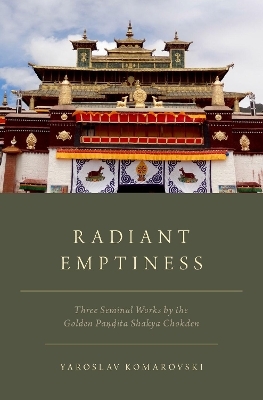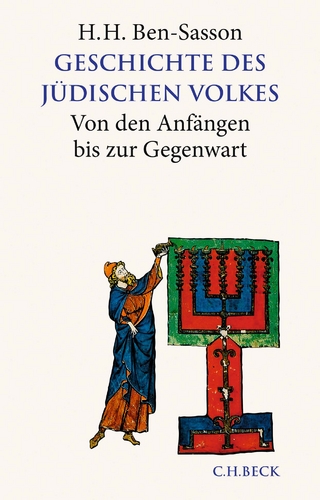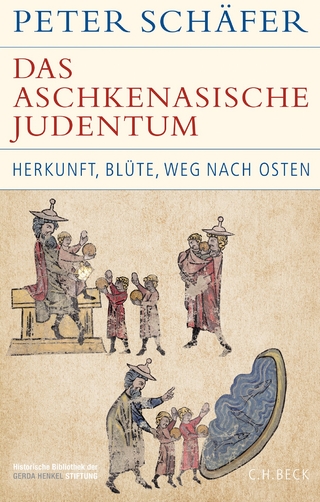
Radiant Emptiness
Three Seminal Works by the Golden Pandita Shakya Chokden
Seiten
2020
Oxford University Press Inc (Verlag)
978-0-19-093383-8 (ISBN)
Oxford University Press Inc (Verlag)
978-0-19-093383-8 (ISBN)
In Luminous Emptiness, Yaroslav Komarovski offers an annotated translation of three seminal works on the nature and relationship of Yogacara and Madhyamaka, by Serdok Penchen Shakya Chokden (1428-1507).
In Luminous Emptiness, Yaroslav Komarovski offers an annotated translation of three seminal works on the nature and relationship of the Yogacara and Madhyamaka schools of Buddhist thought, by Serdok Penchen Shakya Chokden (1428-1507). There has never been consensus on the meaning of Madhyamaka and Yogacara, and for more than fifteen centuries the question of correct identification and interpretation of these systems has remained unsolved. Chokden proposes to accept Yogacara and Madhyamaka on their own terms as compatible systems, despite their considerable divergences and reciprocal critiques. His major objective is to bring Yogacara back from obscurity, present it in a positive light, and correct its misrepresentation by earlier thinkers. He thus serves as a major resource for scholarly research on the historical and philosophical development of Yogacara and Madhyamaka. Until recently, Shakya Chokden's works have been largely unavailable. Only in 1975 were his collected writings published in twenty-four volumes in Bhutan. Since then, his ingenious works on Buddhist history, philosophy, and logic have attracted increasing scholarly attention. Komarovski's research on Shakya Chokden's innovative writings--most of which are still available only in the original Tibetan--revises early misinterpretations by addressing some of the most complicated aspects of his thought. While focusing on his unique interpretation of Yogacara and Madhyamaka, the book also shows that his thought provides an invaluable base to challenge and expand our understanding of such topics as epistemology, contemplative practice, the relationship between intellectual study and meditative experience, and other key questions that occupy contemporary scholarship on Buddhism and religion in general.
In Luminous Emptiness, Yaroslav Komarovski offers an annotated translation of three seminal works on the nature and relationship of the Yogacara and Madhyamaka schools of Buddhist thought, by Serdok Penchen Shakya Chokden (1428-1507). There has never been consensus on the meaning of Madhyamaka and Yogacara, and for more than fifteen centuries the question of correct identification and interpretation of these systems has remained unsolved. Chokden proposes to accept Yogacara and Madhyamaka on their own terms as compatible systems, despite their considerable divergences and reciprocal critiques. His major objective is to bring Yogacara back from obscurity, present it in a positive light, and correct its misrepresentation by earlier thinkers. He thus serves as a major resource for scholarly research on the historical and philosophical development of Yogacara and Madhyamaka. Until recently, Shakya Chokden's works have been largely unavailable. Only in 1975 were his collected writings published in twenty-four volumes in Bhutan. Since then, his ingenious works on Buddhist history, philosophy, and logic have attracted increasing scholarly attention. Komarovski's research on Shakya Chokden's innovative writings--most of which are still available only in the original Tibetan--revises early misinterpretations by addressing some of the most complicated aspects of his thought. While focusing on his unique interpretation of Yogacara and Madhyamaka, the book also shows that his thought provides an invaluable base to challenge and expand our understanding of such topics as epistemology, contemplative practice, the relationship between intellectual study and meditative experience, and other key questions that occupy contemporary scholarship on Buddhism and religion in general.
Yaroslav Komarovski (PhD University of Virginia, 2007) is Associate Professor of Religious Studies at the University of Nebraska-Lincoln. He is the author of Tibetan Buddhism and Mystical Experience (OUP 2015).
Introduction
1. Profound Thunder amidst the Clouds of the Ocean of Definitive Meaning: Differentiation of the Two Systems of the Great Madhyamaka Deriving from the Two Great Chariot Ways
2. Rain of Ambrosia: Extensive Auto-Commentary on the Treatise That, Explaining Differentiation of the Two Ways of Great Chariots, Establishes the Definitive Meaning Approved by Them as One
English-Tibetan Glossary
Glossary of Tibetan Names and Titles
Bibliography
Index
| Erscheinungsdatum | 25.03.2020 |
|---|---|
| Verlagsort | New York |
| Sprache | englisch |
| Maße | 236 x 160 mm |
| Gewicht | 839 g |
| Themenwelt | Geschichte ► Teilgebiete der Geschichte ► Religionsgeschichte |
| Geisteswissenschaften ► Philosophie ► Geschichte der Philosophie | |
| Geisteswissenschaften ► Philosophie ► Philosophie der Neuzeit | |
| Geisteswissenschaften ► Religion / Theologie ► Buddhismus | |
| ISBN-10 | 0-19-093383-6 / 0190933836 |
| ISBN-13 | 978-0-19-093383-8 / 9780190933838 |
| Zustand | Neuware |
| Informationen gemäß Produktsicherheitsverordnung (GPSR) | |
| Haben Sie eine Frage zum Produkt? |
Mehr entdecken
aus dem Bereich
aus dem Bereich
Von den Anfängen bis zur Gegenwart
Buch | Hardcover (2022)
C.H.Beck (Verlag)
34,00 €
Herkunft, Blüte, Weg nach Osten
Buch | Hardcover (2024)
C.H.Beck (Verlag)
39,00 €


